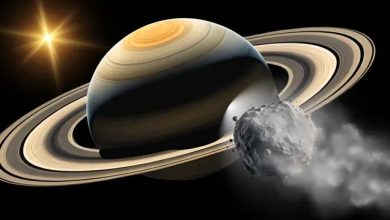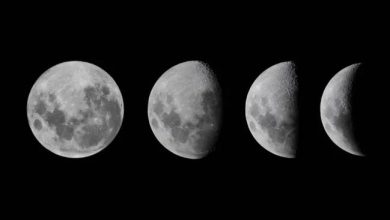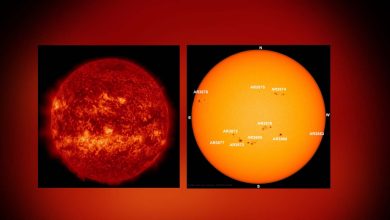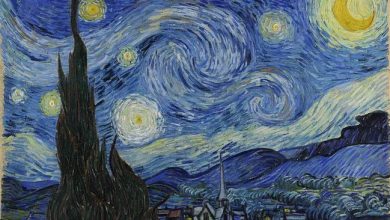The Milky Way is not the only galaxy: stars whose brightness is changing with time
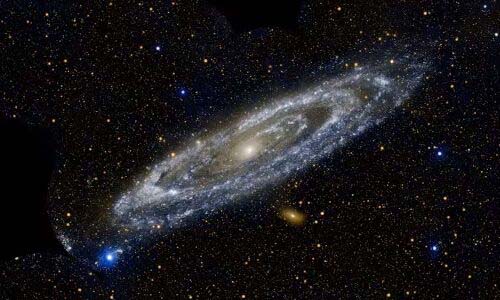
SCIENCE: On Sunday, November 23, 1924, 100 years ago this month, readers turning to page six of The New York Times may have found an interesting article amid several large ads for fur coats. The headline read: The American astronomer at the center of the article, Dr. Edwin Powell Hubble, was probably amused by the misspelling of his name. But the story contained details of an important discovery: Hubble had discovered that two spiral-shaped nebulae, objects made of gas and stars, previously thought to reside within our galaxy, were located outside it.
These objects were actually the Andromeda and Messier 33 galaxies, the closest large galaxies to our galaxy. Today, astronomers estimate that there are many trillions of galaxies in the universe, based on observations of hundreds of millions of galaxies. Four years before Hubble’s announcement, an event called the Great Debate took place in Washington, D.C., between American astronomers Harlow Shapley and Heber Curtis. Shapley had recently shown that the Milky Way is larger than previously measured. Shapley argued that it could accommodate spiral nebulae within it. Curtis, on the other hand, advocated the existence of galaxies beyond the Milky Way.
Looking back, and ignoring some details, Curtis won the debate. However, the method used by Shapley to measure distances in the Milky Way was crucial to Hubble’s discovery. And his method was inherited from the work of a pioneering American astronomer: Henrietta Swan Leavitt. In 1893, a young Leavitt was hired as a “computer” to analyze images from telescopic observations at the Harvard College Observatory in Massachusetts. Leavitt studied photographic plates from telescopic observations of another galaxy called the Small Magellanic Cloud, made by other observatory researchers.
Leavitt was searching for stars whose brightness varies over time. Of more than a thousand variable (changing) stars, he identified 25 as a type called Cepheids, and published the results in 1912. The brightness of Cepheid stars varies over time, so they appear to pulsate. Leavitt found a consistent relationship: Cepheids that pulsated more slowly were intrinsically brighter (more luminous) than Cepheids that pulsated more quickly. This was called the period-luminosity relation.
Other astronomers realized the importance of Leavitt’s work: they could use the relation to find the distance to stars. As a student at Princeton University, Shapley used the period-luminosity relation to estimate the distance to other Cepheids in the galaxy. In this way Shapley estimated the size of our galaxy. But, for astronomers to be sure about distances within our galaxy, they needed a more direct way to measure the distance to Cepheids. The stellar parallax method is another way to measure cosmic distances, but it only works for nearby stars. As Earth orbits the Sun, a nearby star appears to move relative to more distant background stars. This apparent motion is known as stellar parallax. Through the angle of this parallax, astronomers can figure out a star’s distance from Earth.
Danish researcher Ejnar Hertzsprung used stellar parallax to obtain the distance of some nearby Cepheid stars, which helped calibrate Leavitt’s work. The New York Times article emphasized the “great” telescopes at Mount Wilson Observatory near Los Angeles, where Hubble was working. Telescope size is typically judged by the diameter of the primary mirror. With a 100-inch (2.5-meter) diameter mirror to collect light, the Hooker telescope at Mount Wilson was the largest telescope of the time.
Larger telescopes are not only more sensitive for resolving galaxies, but also produce sharper images. So Edwin Hubble was in a good place to make his discovery. When Hubble compared his photographic plates taken using the 100-inch telescope to plates taken by other astronomers on previous nights, he was thrilled to see a bright star changing in brightness over time, as expected for a Cepheid. Using Leavitt’s calculations, Hubble found that the distance to his Cepheid was greater than Shapley’s size for the Milky Way. In the following months, Hubble examined other spiral nebulae as he searched for more Cepheids to measure the distance to. Word of Hubble’s observations was spreading among astronomers. At Harvard, Shapley received a letter from Hubble detailing the discovery. He passed it on to fellow astronomer Cecilia Penn-Gaposchkin, saying:


